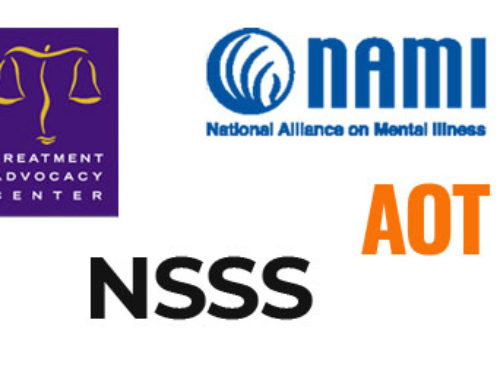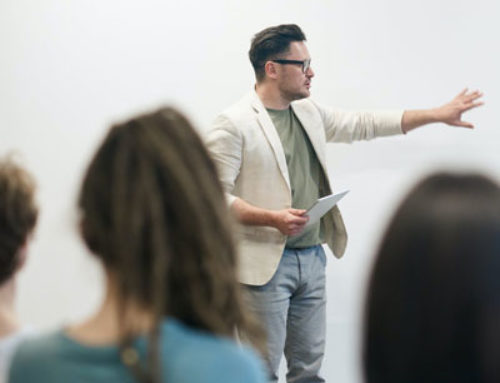Herschel Hardin, March 8, 2022
First in a series on education courses on serious mental illness for those without a mental illness themselves.
RVICS has stressed that an orientation course on serious mental illness is an integral part of its proposal for an intentional community on the səmiq̓ʷəʔelə/Riverview Lands. The course will be for those without mental illness themselves, roughly half the community as we envisage it.
What, though, lies behind the idea?
The inspiration behind it is something called Family-to-Family, a course for those who have a family member diagnosed with serious mental illness. The program comes from the National Alliance on Mental Illness, or NAMI, in the U.S., but it was really the creation of an extraordinary Vermont woman, Joyce Burland, who had both a sister and daughter with schizophrenia and knew how important it was for families to have a grip on what was happening when someone close to them fell ill. See “My Journey in Family Education; or You Bet Knowledge is Strength!” for that story.
I taught the course umpteen times with the North Shore Schizophrenia Society and also did editorial work on it to fit British Columbia circumstances. The words “transformative” and “empowering” are overworked clichés, but in Family-to-Family’s case, they really do apply.
Picture the scene. It’s the first night. Parents, siblings, spouses, sometimes children of someone who is ill, cautiously come through the door, not knowing what to expect. There are about twenty of them. They’re often traumatized, struggling with their emotions and the difficulties of coping. They may even be in full crisis right at that moment, with their loved one psychotic but not in treatment.
They learn first of all they are not to blame for what has happened, nor is the ill person to be blamed. They introduce themselves to each other. They discover that their two co-teachers are family members with a mentally ill relative just like themselves. The teachers have been through the mill. Because of this, the class participants feel safe to share their experiences openly – to unburden themselves – probably for the first time since mental illness entered their lives.
They learn about symptoms, diagnosis, how the brain works and is impacted by mental illness, and how anti-psychotics and anti-depressants work in response. There is a lot of interaction and sharing, including the sharing by class members of their own stories. A “Crisis File” is provided with recommendations for handling crises, such as the threat of suicide or full-blown psychosis.
An important part of the course is learning what those with the illness have gone through and are going through. Gaining empathy for their struggle, including a first-person account of recovery from a guest speaker, is a key element. There’s a workshop on how best to communicate when illness gets in the way and also a workshop for the family members themselves on how best to handle the burden and pressure they’re under.
One of Joyce Burland’s greatest insights was her putting together a chart of the “stages of emotional responses” – a chart posted in view permanently for the class. The emotional journey begins with shock, and with denial and hoping against hope. This is followed by anger, guilt, and resentment as one recognizes how serious and chronic mental illness is. Grief is a part of this. The final stage is understanding, acceptance, and moving into action, undertaking advocacy for one’s loved one and for the betterment of those with serious mental illness generally.
The extraordinary thing about this chart is that no matter how educated and sophisticated class members might be, they all go through these stages without fail, as did I when my son fell ill.
Also extraordinary, for teachers of the course, is watching participants in the class move through those stages, growing stronger and helping each other as they proceed. In my time the course was 12 sessions long (two-and-a-half hours each, with a break), and I could predict I would see these changes beginning to happen as early as Class 4. I always did.
Class members go from internal chaos and not knowing what to do, through to having a solid understanding of mental illness and the aility to chart a course of action. Not least is the confidence to communicate effectively with psychiatrists and other service providers and not be cowed by them. The change from when class members first walked through the door for the class is dramatic.
As Joyce Burland put it, knowledge is strength. Empathy is strength, too.
Note that Family-to-Family is for family members. A course for residents of our proposed intentional community on the səmiq̓ʷəʔelə/Riverview Lands would be somewhat different, but there would also be commonalities. I’ll go into that in my next posting in this series.
Comments and expressions of interest in contributing to RVICS Commentaries should be sent to info@riverviewvillage.ca. To join the Riverview Village Intentional Community Society or to donate, please visit our website at www.riverviewvillage.ca.



